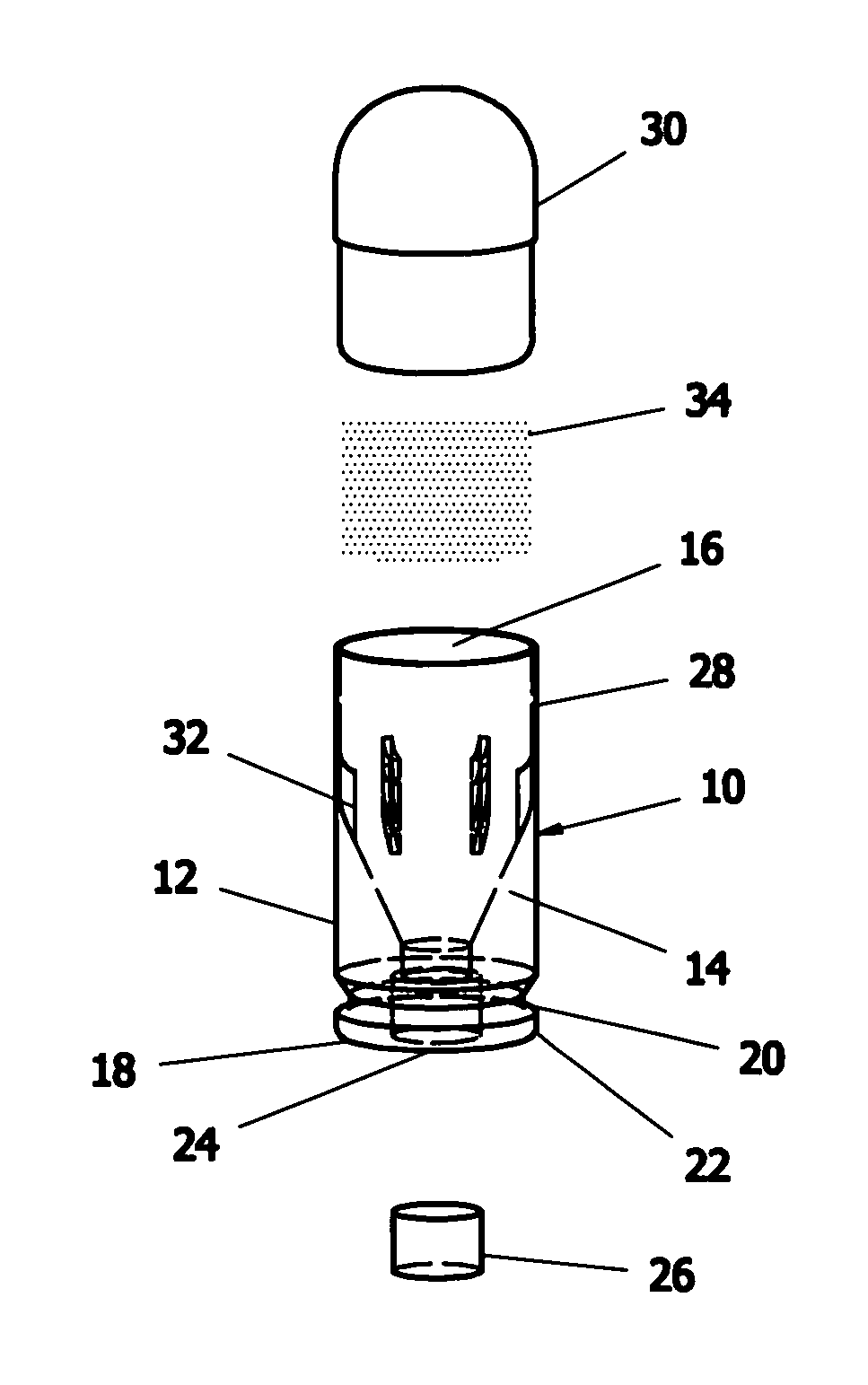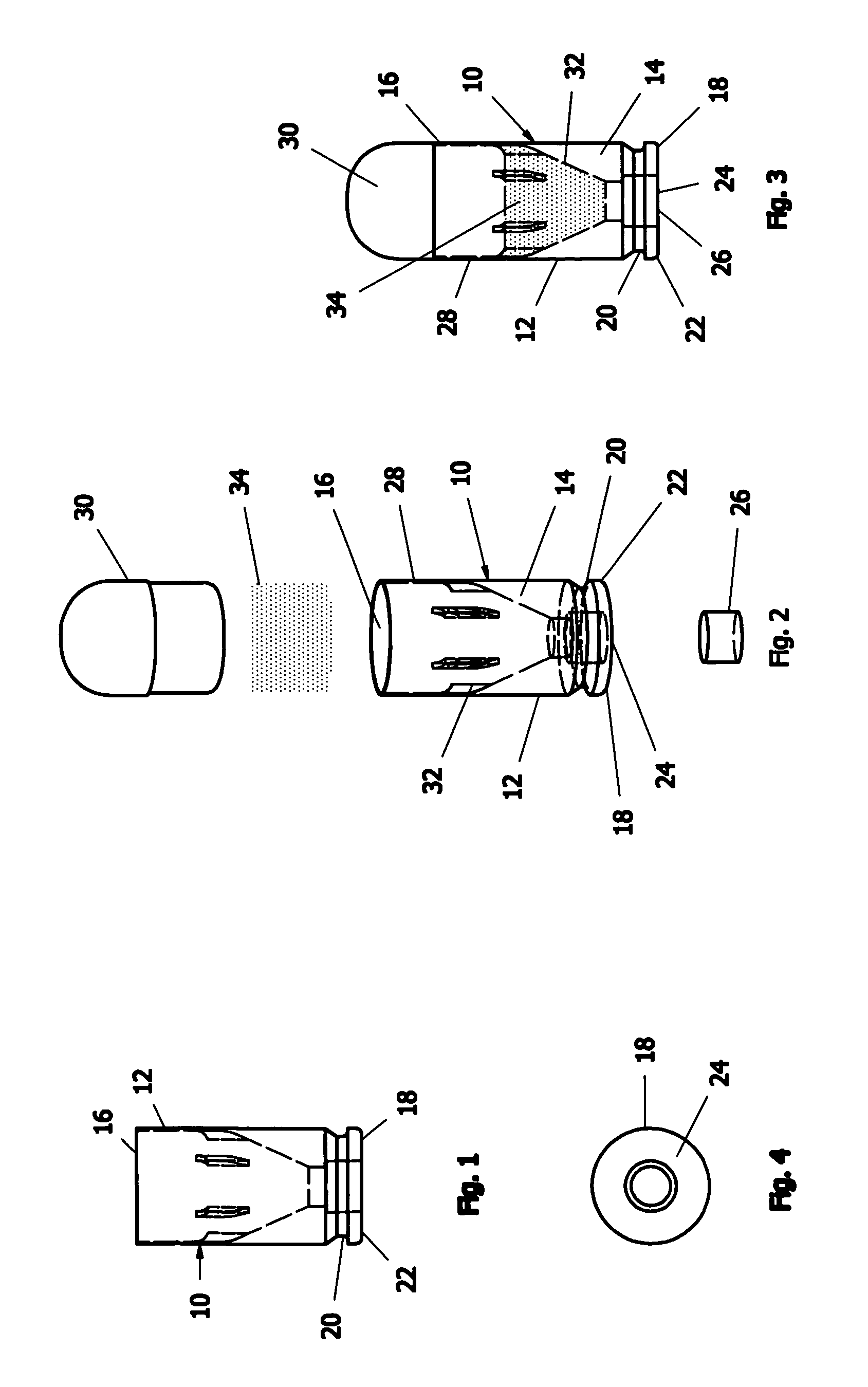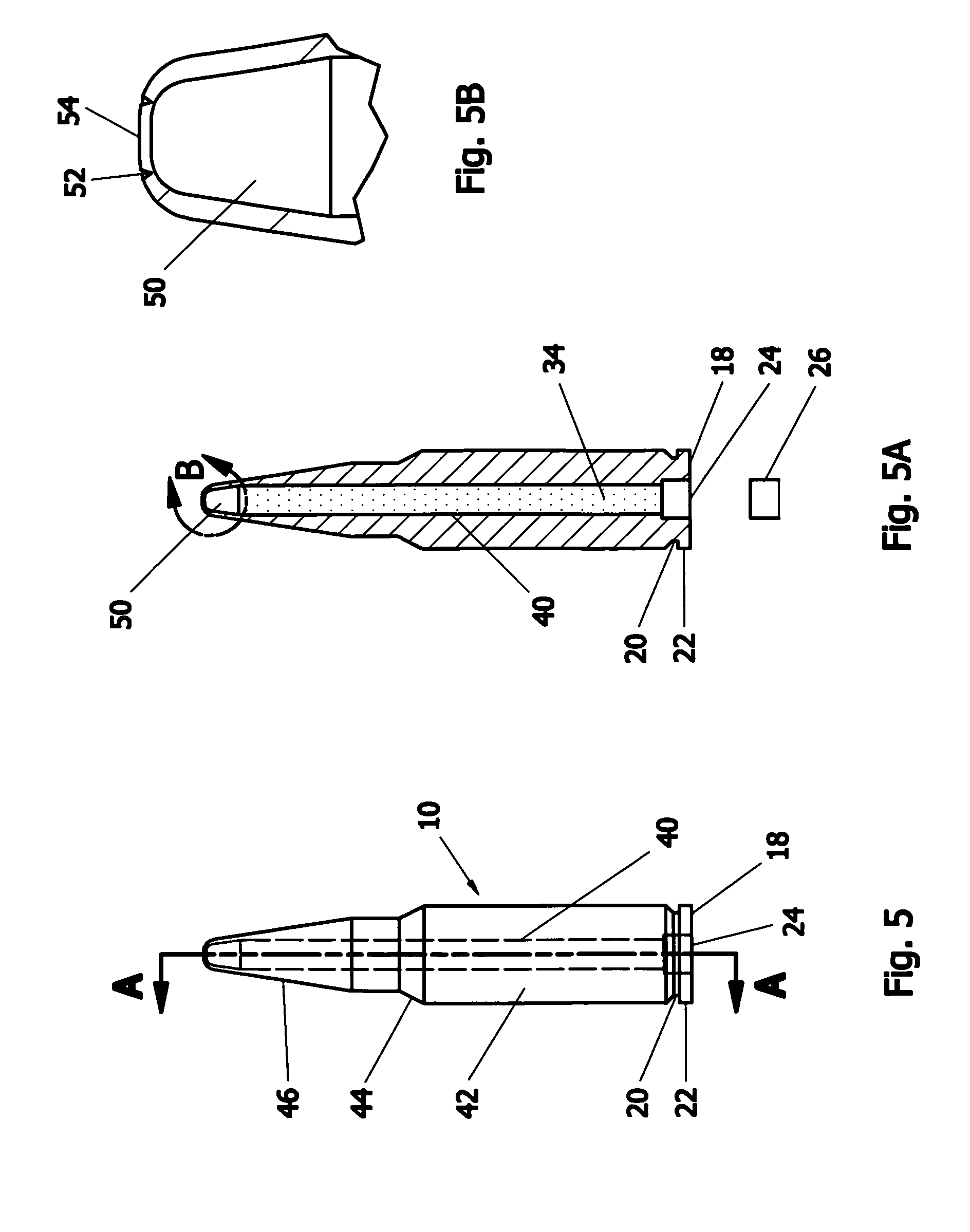Plastic ammunition casing and method
a casing and ammunition technology, applied in the field of new cartridges, can solve the problems of poor quality of ammunition, and high cost of brass casings, and achieve the effect of reducing the cost of brass casings
- Summary
- Abstract
- Description
- Claims
- Application Information
AI Technical Summary
Benefits of technology
Problems solved by technology
Method used
Image
Examples
Embodiment Construction
[0019]A first embodiment of a plastic casing for ammunition is shown in FIGS. 1-4. In this embodiment, the plastic casing 10 includes a tubular body 12 with a conical shaped section 14 on a lower portion of an inner surface, an open end 16 for receiving a projectile, and a base 18 comprising a substantially closed end having an annular groove 20 around the periphery of the body 12 at a lower end, thus defining an annular extracting rim 22. As shown in FIG. 4, an aperture 24 is provided at or near the center of the base 18 for insertion of a primer cap 26. The aperture 24 is formed so that it is in communication with the apex of the conical section 14 at the base 18 of the casing 10. It is also contemplated that another similar embodiment may be manufactured without the annular groove, but including an extracting rim around the periphery of the base.
[0020]FIGS. 1-3 show an integrally formed, polymeric casing 10 used in conjunction with pistol ammunition, wherein the casing 10 include...
PUM
 Login to View More
Login to View More Abstract
Description
Claims
Application Information
 Login to View More
Login to View More - R&D
- Intellectual Property
- Life Sciences
- Materials
- Tech Scout
- Unparalleled Data Quality
- Higher Quality Content
- 60% Fewer Hallucinations
Browse by: Latest US Patents, China's latest patents, Technical Efficacy Thesaurus, Application Domain, Technology Topic, Popular Technical Reports.
© 2025 PatSnap. All rights reserved.Legal|Privacy policy|Modern Slavery Act Transparency Statement|Sitemap|About US| Contact US: help@patsnap.com



